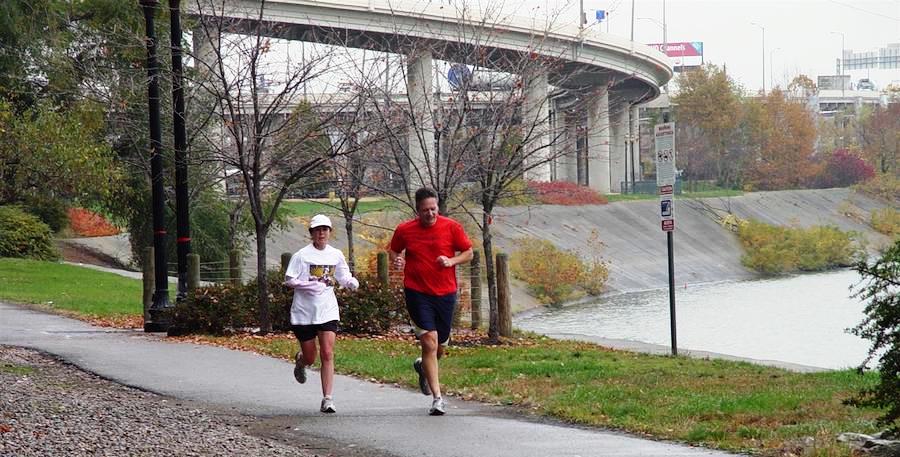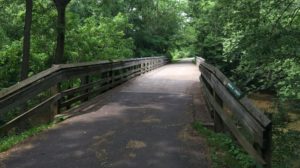Louisvillians officially named the Louisville Loop in 2005, but you could argue that trails run in this Kentucky city’s lifeblood.
In the 1890s, pre-eminent landscape architect Frederick Law Olmsted Sr. envisioned large community parks connected to the neighborhoods of Louisville via “ribbons of green.” His tree-lined parkways still exist today and will serve as spokes to the 100-miles-plus Loop, once complete.
“Olmsted was all about providing an experience for people in the community that was uplifting, restful, restorative and recreative,” explained John A. Swintosky, senior landscape architect with Louisville Metro Division of Transportation. Swintosky, who was formerly on Louisville Parks & Recreation Department staff when he became a Louisville Loop project manager, has been working alongside transportation planner Milana Boz on the project for a long time; he jokingly added that they’ve “been in it since dirt.”
The planned Loop will take trail users through five parts of Jefferson County, giving them a taste of each section’s unique heritage, character and physiographic attributes. As of recently, all five segments have been planned out, with nearly 50 miles completed and various sections in design or construction.
From the start, the city has considered the Loop an essential part of Louisville’s transformation into one of the nation’s most livable cities. The Loop’s estimated impact on the city’s economic growth, connectivity and health are just a few reasons Rails-to-Trails Conservancy (RTC) reached out to the Louisville Metro Parks and Recreation Department (Metro Parks) about the project in 2017.
RTC now points to the Loop as a model of how communities are using active-transportation infrastructure development to address economic, transportation and health goals—with the project serving as a case study in its “Trails Transform America” campaign to ensure trails and walking and biking networks are included in federal infrastructure legislation.
The Louisville Loop is already living up to its goal of linking people to places and each other. The dynamic project has brought together not only trail users, but also a vast network of partners making the work possible.
“There’s value in being collaborative in your approach,” affirmed Swintosky, recalling how the Centers for Disease Control and Prevention (CDC) recognized the Loop’s potential to promote active lifestyles and decrease long-term health-care costs.
Louisville officials are particularly encouraged by national studies showing the rise of property values close to trails, including the Little Miami Scenic Trail in nearby Cincinnati, Ohio.
The Little Miami Scenic Trail is a jewel in the crown of Ohio rail-trails, spanning just over 78 miles from the outskirts of Cincinnati to Springfield over historical bridges and through tranquil state parks, charming small towns, and stunning natural habitats.
The trail is part of a vast network of more than 340 miles of off-road trails that travel throughout Ohio’s Miami Valley. It is also a significant section of the cross-state Ohio to Erie Trail, which travels from the Ohio River in Cincinnati to Lake Erie in Cleveland on more than 270 miles of off-road trails.
Featured photo of the Louisville Loop Riverwalk courtesy of Louisville Parks and Recreation.


